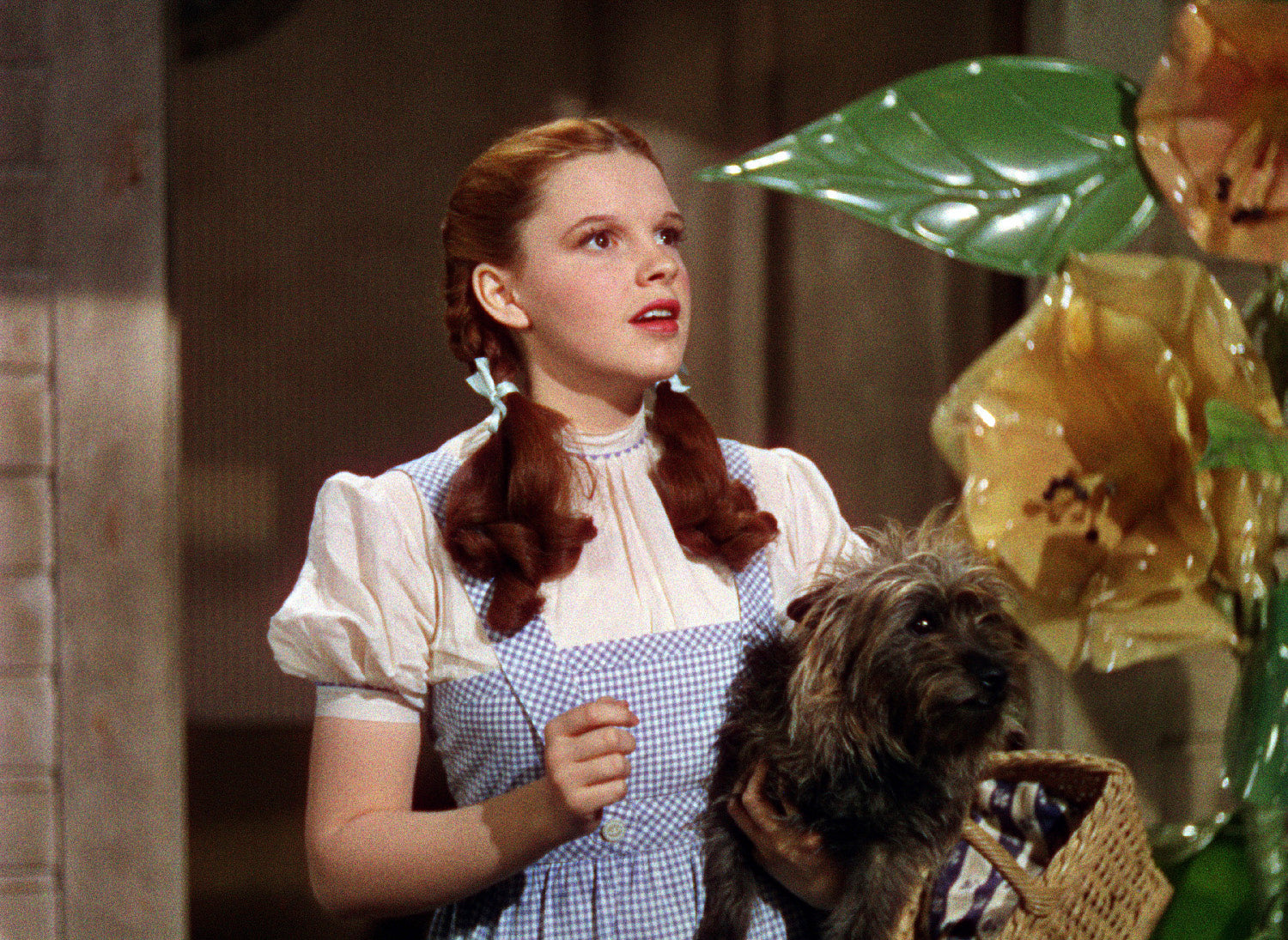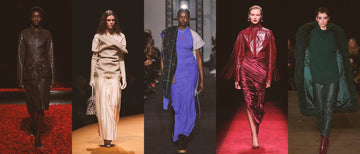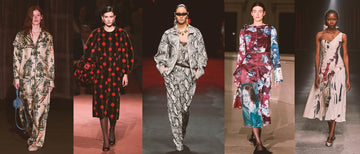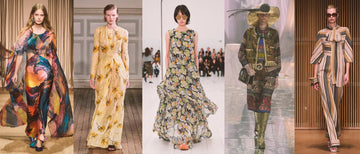History of Gingham
Gingham today is characterised by its contrasting chequered pattern. It is a balanced plain-woven fabric, which originally was made solely from cotton fibres, but now also from synthetic fibres. It is made from carded, fine, or medium yarns of different qualities, which are used to create the different effects of plain, striped or check pattern. Although it is traditionally produced with one yarn being coloured and the other being uncoloured, or white, today it has been adapted and evolved by some into incorporating two colours. Using two different colours of yarn, one colour is on the warp (usually the coloured yarns), which goes against the other one which is on the weft (traditionally the uncoloured yarns). This technique results in the fabric being the same of both sides in terms of colours, meaning it is reversable. A traditional Gingham fabric is also characterised by being ‘dyed in the yarn’ fabric, meaning the yarn would be dyed before it is woven.

Gingham is lightweight, breathable, and a durable fabric, that is also relatively inexpensive to make, all of which qualities likely contribute to its popularity and versatility. It is known for being used widely within the textile world, including in both men and women’s fashion, such as classic check shirts, dresses and skirts. Gingham had one of its first popular debuts in terms of fashion during one of its most well-recognised, iconic moments - Dorothy’s blue and white check dress in the film 'The Wizard of Oz' in 1939, styled by the infamous costumer designer Adrian Adolph Greenburg, or ‘Adrian’. Gingham has also made a big appearance in interiors throughout the years, including in furnishings and home décor, particularly known for its association with the iconic red and white tablecloth, or picnic blanket print.
Whilst the associated of Gingham is of checks, this is actually a long historical misinterpretation, with Gingham actually meaning ‘stripes’. The name Gingham comes from the Malayan word, ‘genggang’ which translates as striped, which then evolved with the French word ‘guingan’ being used by the Bretons, a Celtic ethnic group that are native to a region in the West of France, bordered by the Celtic Sea. The word ‘guingan’ was used to refer to cloth that was of striped colours. So, the way we identify Gingham print today, with its distinguishable checks, is not the original look of the fabric.
The History of the Gingham fabric dates back to the early 1600’s, when it was being made in the Dutch-colonised Malaysia, as well as Indonesia and India. In the early 1600’s, East India Company, a large British trading company set up initially to act as a trading body specifically for English merchants to trade in India, had acquired a monopolised trade between England and the Far East. Through this they started gradually shipping small amounts of the Gingham fabric to England. Shortly after several other countries started setting up similar companies to East India Company, including France and Denmark. This started the spread of the checked fabric around the world. As the Gingham fabric continued to become known in different parts of the world, the fabric was also being widely exported to Europe and colonial US from India. However, as the fabric travelled to new parts of the world, it seemingly lost its original, traditional stripes, which evolved into the checks. From here, in the mid-18th Century, a textile company started to produce the checked fabric in the mills of Manchester, North England, using imported dyes and cotton. At this point a number of local cotton mills were also established across the US, with them also producing locally manufactured versions of the fabric. The Gingham then continued to become highly popular around the world, particularly in the US by the start of the 1900’s. The demand and popularity continued to grow, becoming especially popular in styles of women and children’s dresses. Post World War 1 it was seen in high demand, as an affordable, easy but fashionable fabric for summer. Throughout the rest of the 1900’s the Gingham plaid continued to grow in popularity and spread around the world, making many iconic and memorable fashion appearances in films, on Broadway, and making appearances on celebrity figure and runways.
From here, in the mid-18th Century, a textile company started to produce the checked fabric in the mills of Manchester, North England, using imported dyes and cotton. At this point a number of local cotton mills were also established across the US, with them also producing locally manufactured versions of the fabric. The Gingham then continued to become highly popular around the world, particularly in the US by the start of the 1900’s. The demand and popularity continued to grow, becoming especially popular in styles of women and children’s dresses. Post World War 1 it was seen in high demand, as an affordable, easy but fashionable fabric for summer. Throughout the rest of the 1900’s the Gingham plaid continued to grow in popularity and spread around the world, making many iconic and memorable fashion appearances in films, on Broadway, and making appearances on celebrity figure and runways.
Looking at Gingham today, it still remains a diverse, staple print that reoccurs year to year in everyday fashion as well as on the runways. Some recent notable appearances it has made in fashion include, Ben Sherman Spring/Summer 2019 collection with Gingham checks incorporated in a contemporary way into menswear, Balenciaga Spring/Summer 2018 using a more traditional approach with traditional white with blue and red check shirts. Also, notably, Loewe Spring/Summer 2018 collection included patchwork elements of traditional pastel pink and blue checks in their collection. Though Gingham's signature checks were originally woven into the cotton fabric, the same look can be achieved with printing, reducing cost and opening up a wider range of fabrics, or even other objects.
Perhaps the extent of the true versatility timelessness of this classic plaid is evident in the fact that we would still today wear the exact same print of blue and white check dress as a summer staple as Dorothy did in 'The Wizard of Oz' in the 1930’s. Along with no signs of this plaid not continuing to appear in the runways every year, the Gingham plaid has proven itself as a perfect example of; when something works well, why change it!
REFERENCES
https://www.anothermag.com/fashion-beauty/8451/a-brief-history-of-gingham
https://www.britannica.com/topic/gingham
https://www.gq.com/story/dropping-knowledge-gingham
https://www.countryliving.com/home-design/a43151/history-of-gingham/
 |
Katie Kelly |
| Katie Kelly is a recent Textile Design, and Business and Marketing Graduate from Scotland. She loves travelling, exploring new places and doing anything creative. While studying, Katie specialised in printed textiles, and loves creating all types of prints and patterns, especially experimenting with colour and texture! |










4 comments
Great reading this. I remember my mother always dressing me up in gingham dresses :)
Just stumbled across this. Great read! My daughters love wearing gingham print!
Being a kid growing up in the 60’s the wizard of oz was my favoRite movie!Never thought that Dorothy’s outfit had a gingham print on it.